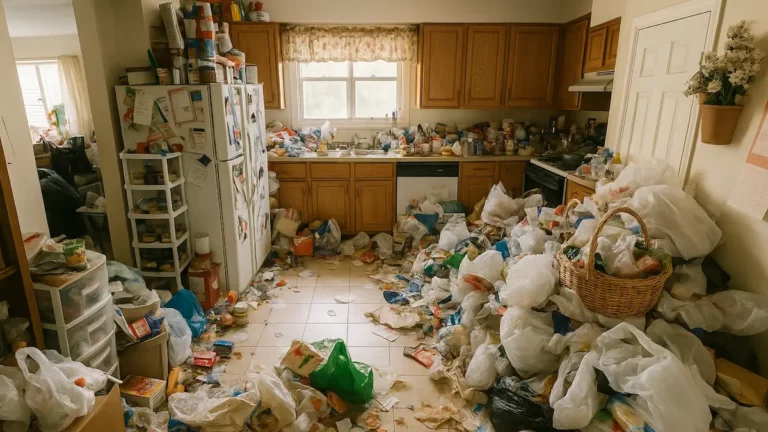Flooding can cause more than surface damage. Once the immediate danger has passed, many homeowners are left wondering what to do after a flood in the house, especially when it comes to salvaging personal belongings. Knowing how to clean up after a flood can help reduce long-term damage and improve the likelihood of saving valued items.
This guide provides practical advice on flood clean-up, drying, disinfection, and safe flood restoration methods for carpets, furniture, books, and more.
First Steps: What to Do After a Flood in Your House
Before attempting any clean-up, ensure the property is safe to enter:
- Wait for official clearance if structural damage is suspected.
- Switch off electricity and gas at the mains.
- Wear protective gear (gloves, boots, masks) to avoid exposure to contaminated water or mould.
Once safe, document the damage for insurance purposes. Take photographs of all affected areas and contents before starting clean-up.
Cleaning Up After a Flood: Tips That Work
Water removal should begin as soon as possible. Use pumps, buckets or a wet/dry vacuum to extract standing water. Focus on ventilation. Open windows and doors to allow air flow, and bring in fans or dehumidifiers to help dry the space.
Flood clean-up companies can assist with more extensive jobs, but if you’re managing the process yourself, here are some key areas to prioritise.
Disinfecting After Garage Flooding
Garages often take the longest to dry due to poor ventilation. After water removal:
- Move items off the floor to dry areas, especially anything stored in cardboard, which usually can’t be salvaged.
- Clean and disinfect concrete floors with detergent followed by a diluted bleach solution, particularly if floodwater was contaminated.
- Dry the area thoroughly using fans and, if available, a dehumidifier. Keep the garage door open for airflow if the weather allows.
- Use moisture absorbers or silica gel packets in storage containers to help prevent mould on salvaged items.
Take extra care with electrical tools or appliances that may have been exposed to water. These should be inspected by a qualified technician before reuse.
Allow the space to dry fully before moving items back in.
How Long Should You Run a Dehumidifier After a Flood?
In most homes, a dehumidifier should run for 3- 5 days hours continuously. In damp areas like garages or closed rooms, it may need to operate longer. Monitor humidity levels and aim to keep them under 50% to help prevent mould growth.
- Keep doors and windows closed while the dehumidifier is running to contain and dry the air more efficiently.
- If your garage is large or very damp, you may need a high-capacity unit designed for larger spaces.
- Use extension cords with caution, and only if the area is dry and safe from ongoing water exposure.
Drying and Cleaning Furniture, Carpets and Personal Items
Drying methods vary depending on the materials involved. Not everything can be saved, but acting quickly improves the chances of restoration.
Drying Carpet After Flood
- Remove and dispose of the underlay if saturated.
- Clean the carpet with a suitable solution.
- Use fans and a dehumidifier to dry thoroughly.
- Avoid replacing carpet until the subfloor is dry.
If contaminated water has soaked into natural fibres, disposal may be the safer option.
Explore in Depth: Drying Carpet After Flood
Upholstered and Wooden Furniture
- For solid wood furniture, remove drawers and cushions to allow airflow.
- Dry slowly to reduce warping or cracking.
- Upholstered items may need to be discarded if they’ve absorbed contaminated water or if the fabric has mould.
Professional water damage cleaning companies may be able to salvage high-value items with specialist treatment.
Damage to Clothes and Linens
Even if your clothes weren’t in direct contact with floodwater, damp conditions can cause mildew or pick up odours. Wash clothes in hot water with a disinfectant, and dry completely before storing.
How to Clean Water-Damaged Books
- Place books upright with pages fanned out for air drying.
- Use absorbent paper towels between every few pages.
- Freeze valuable documents if immediate drying isn’t possible to prevent mould.
Books damaged by contaminated water or already showing mould are usually best discarded.
What to Do After a Flood in a Garage
Garages are particularly vulnerable. After garage flooding:
- Prioritise removal of standing water and cleaning surfaces.
- A dehumidifier helps draw out residual moisture from the air, concrete floor, and stored items
- Use extension cords with caution, and only if the area is dry and safe from ongoing water exposure.
Don’t forget to inspect storage areas. Items kept in cardboard boxes are usually unsalvageable, especially if stored directly on the floor.
Read More: Water Damage Checklist
When to Call a Flood Damage Cleaning Company
Professional services may be needed if:
- Water damage has saturated the carpet through to the structure.
- Water has run between rooms, affecting walls and wall linings.
- Water came from sewage or greywater sources.
- Mould is visible or suspected.
- You’re unable to remove odours or dry materials fully.
- Valuable items need specialist cleaning.
RESTATE provides professional flood recovery services and support. Our team can assess damage, carry out safe drying, and advise on what can be restored or replaced. Get in touch with us today.


